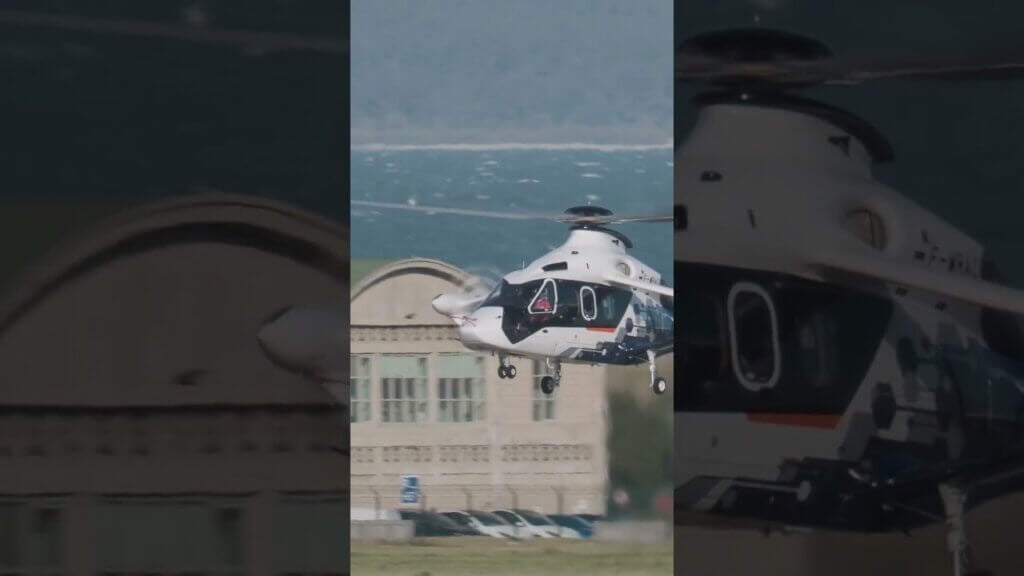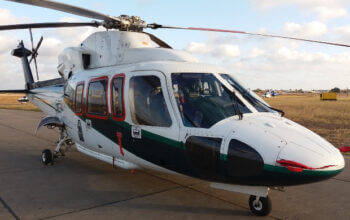Airbus is taking a growing interest in the eVTOL and wider urban air mobility (UAM) market. Its direct work in the area includes the development of the Vahana single-seat demonstrator, which took its final test flight at the Pendleton unmanned aircraft systems (UAS) range in Oregon in the U.S. in November 2019. The OEM’s major focus is now the CityAirbus, a four-seat demonstrator that performed its first take-off in May 2019.

Joerg Mueller, head of UAM at Airbus, spoke to eVTOL.com about the company’s recent work in the domain and his thoughts on the broader potential of the market.
eVTOL.com: What is the current status of CityAirbus?
Joerg Mueller: The CityAirbus is currently undergoing a test program at the Ingolstadt Manching Airfield [in Germany]. CityAirbus, like Vahana before it, is a technology demonstrator, as opposed to a prototype that precedes serial production.

The purpose of CityAirbus is to test a multi-rotor configuration, capable of carrying the payload necessary to offer a viable transport service. It also allows us to develop technological “bricks” like electrification and autonomy that will benefit traditional helicopters and urban air mobility platforms alike.
eVTOL.com: How can you take your experience from developing modern helicopters and apply it to the eVTOL domain?
Joerg Mueller: Of course, helicopters are “VTOLs,” just without the “e”. This “e” has a big significance. Today, you simply cannot take a classic helicopter, put a battery inside instead of an engine and operate it in the same way that you did before. Electric flight requires a different architecture.
This is both a challenge and an opportunity. You can develop a vehicle now that adapts to the flight phase: for example, use an aerodynamically optimized wing in cruise. This makes it more energy efficient than the helicopters we are operating today.
Our decades-long experience with classic “VTOLs” is a big advantage and helps us in planning, development, testing, certification, and marketing.
eVTOL.com: What did the company learn from Vahana — has any of this been incorporated into CityAirbus?
Joerg Mueller: The results from our tilt-wing Vahana test flights have been analyzed and the results will be applied to our future eVTOL developments. The same is true for CityAirbus, a multicopter design. The aircraft are completely different [to one another] and represent configurations at the extreme opposite ends of the new design space for eVTOLs; they have been developed in parallel and by two separate teams. This allowed us to maximize our learnings about the possible architecture of eVTOLs.
eVTOL.com: Is your focus mainly on the air taxi market? Do you see potential in the cargo domain?
Joerg Mueller: There is a wide variety of potential applications for VTOL technologies, for passenger transport and for cargo, which can also include medical use cases. We have learnt a lot from our passenger vehicle demonstrators CityAirbus and Vahana, and completed flight trials on parcel and maritime deliveries with Skyways in Singapore. These new vehicles will complement helicopters, which will continue for the time being to be the only viable solution for missions with high range and payload requirements, such as emergency rescue, law enforcement, or military missions.
eVTOL.com: What are the major current challenges of developing eVTOLs?
Joerg Mueller: The main challenge is to develop an eVTOL that is not only able to fly but that can be certified and combines safety with cost efficiency. This starts with the vehicle configuration itself, where a large variety of new concepts becomes possible due to electrical propulsion. They all have pros and cons which strongly depend on the characteristics of the transport mission.
Furthermore, there is the question of energy storage and electric drive train, where batteries can only enable relatively short missions. Hydrogen could be an alternative, but it is less mature for now. There are also the technologies of autonomous flight that will allow operations without a pilot on board.
An eVTOL can only operate in a system of systems with infrastructure on the ground and an efficient or automated management of the traffic in the airspace. All these tasks will require significant investments. No company could do it alone — we depend on the entire [industrial] ecosystem.
eVTOL.com: How far away are we from air taxis being a reality? What is the long-term potential of this market for Airbus?
Joerg Mueller: We see the first, real-life demonstrations and punctual UAM services with pilots on board becoming available in the middle of the decade. However, operations at scale with a more efficient generation of eVTOLs and fully autonomous operations are probably around 10 years out. All of this will not only depend on the industry but also on the regulators for all aspects of UAM operations, in the air and on the ground.









Thanks for the article. It is good to know what Airbus is doing in terms of eVTOLs.
What a success for Airbus…!
In French it is called “La Berezina”….!
So much damage to Airbus R&D and all the UAM sector.
Not counting the waste of shareholders’ money and tax payers’ money.
And European starts-up killed just to achieved Airbus…. failure… Great, this is the result of Airbus fantastic management. May be Joerg should be appointed now, Mr. Hydrogen at Airbus.